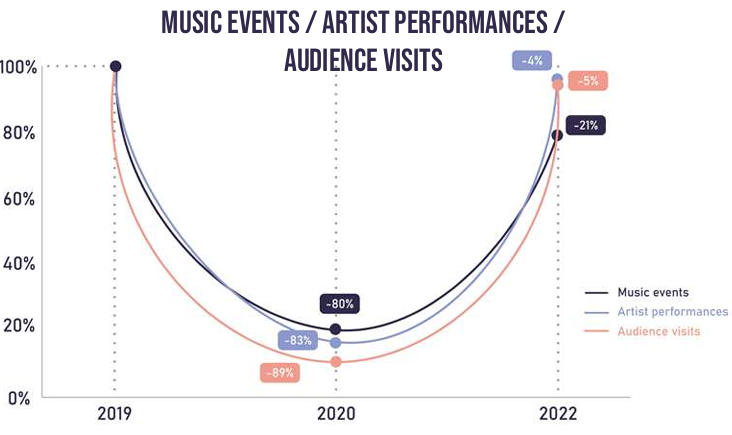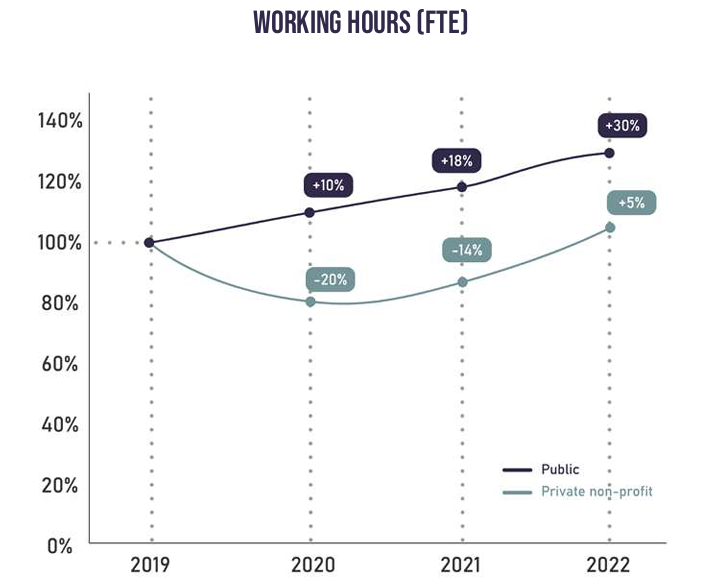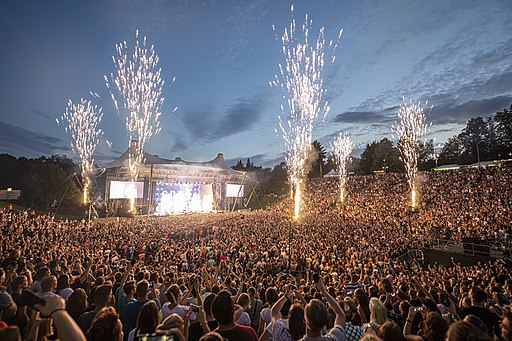The live music sector in Europe is experiencing significant financial challenges, with venues struggling to recover from the pandemic's devastating impact while simultaneously navigating rising operational costs. These economic pressures are threatening the rich cultural diversity that has long characterized Europe's music scene, according to a new study by Live DMA.
During the COVID-19 pandemic, severe restrictions led to a dramatic decline in income for music venues. While public non-profit venues demonstrated greater resilience through government subsidies, private commercial venues were hit particularly hard. Artists, venue workers, and the broader music ecosystem suffered substantial financial losses, despite some governmental support efforts.
From March 2020 to March 2022, government-imposed restrictions slashed music events by 74% and audience visits by 77% across Europe.
Private commercial venues, which rely heavily on ticket and bar sales, saw income plummet by 67% in 2020 compared to pre-pandemic levels, according to the study.
Non-profit and public venues fared slightly better due to subsidies, but still faced income drops of 33% and 24%, respectively.
The recovery in 2022 brought mixed results. Many venues successfully reopened and rescheduled concerts, witnessing increased audience attendance. However, the financial landscape remained precarious. Rising costs in energy, housing, and employment continued to strain venue operations, with private commercial venues facing the most significant challenges due to limited financial reserves and reduced government assistance.
According to Live DMA, public venues saw expenditure rise 30% in 2022, while nonprofits faced a 5% increase. Private commercial venues, already weakened by pandemic debt, struggled to offset these costs without subsidies, which covered just 9% of their lost income in 2020.

In a second Live DMA paper interviews with venue operators underscore ongoing struggles. Bruno Giusti of Italy’s Vibra Club noted, “The public no longer feels attached to venues as before,” while staffing shortages and inflation threaten artistic quality.
Rotown, a Dutch venue, highlighted concerns about rising ticket prices alienating younger audiences.
Spain’s Razzmatazz warned of an “inflation bubble” in ticketing and stressed the need for inclusivity and sustainability investments.
Subsidy Disparities and Workforce Crisis
The report reveals stark disparities in government support. Public venues received subsidies covering 51% of their income in 2019, compared to 31% for non-profits and just 4% for commercial venues.
Workforce losses were acute: private commercial venues saw a 47% drop in working hours in 2020, with freelancers and technicians leaving the sector entirely. Despite 2022’s partial recovery, 2024 remains precarious, according to the report. The live music sector is particularly vulnerable, with high artist fees and intense competition making it increasingly difficult for smaller venues to host events and remain financially viable.
Many venues experience chronic staffing issues characterized by low pay, high turnover rates, and difficulty attracting younger workers. The demanding nature of night shift work, combined with high levels of staff burnout, creates a precarious employment environment that threatens the sustainability of these cultural institutions, according to Live DMA.

Rising costs outpace income growth, forcing venues to cut back on emerging artists and diverse programming.
Perhaps most critically, rising costs and market pressures are constraining venues' programming independence. Smaller music spaces find themselves increasingly risk-averse, reducing their capacity to support emerging artists and serve as incubators of cultural innovation.
“Live music should not become an elitist product,” stressed Minke Weeda of Rotterdam’s Rotown, encapsulating the sector’s plea for survival.
Live DMA warns that without sustained government support, the sector’s role in cultural innovation and talent development is at risk.
Image: Arne Müseler, CC-by-SA-3.0
Source: Live DMA Report "Live Music Venues and Clubs Face Rising Costs Amid Recovery" (December 2024).










